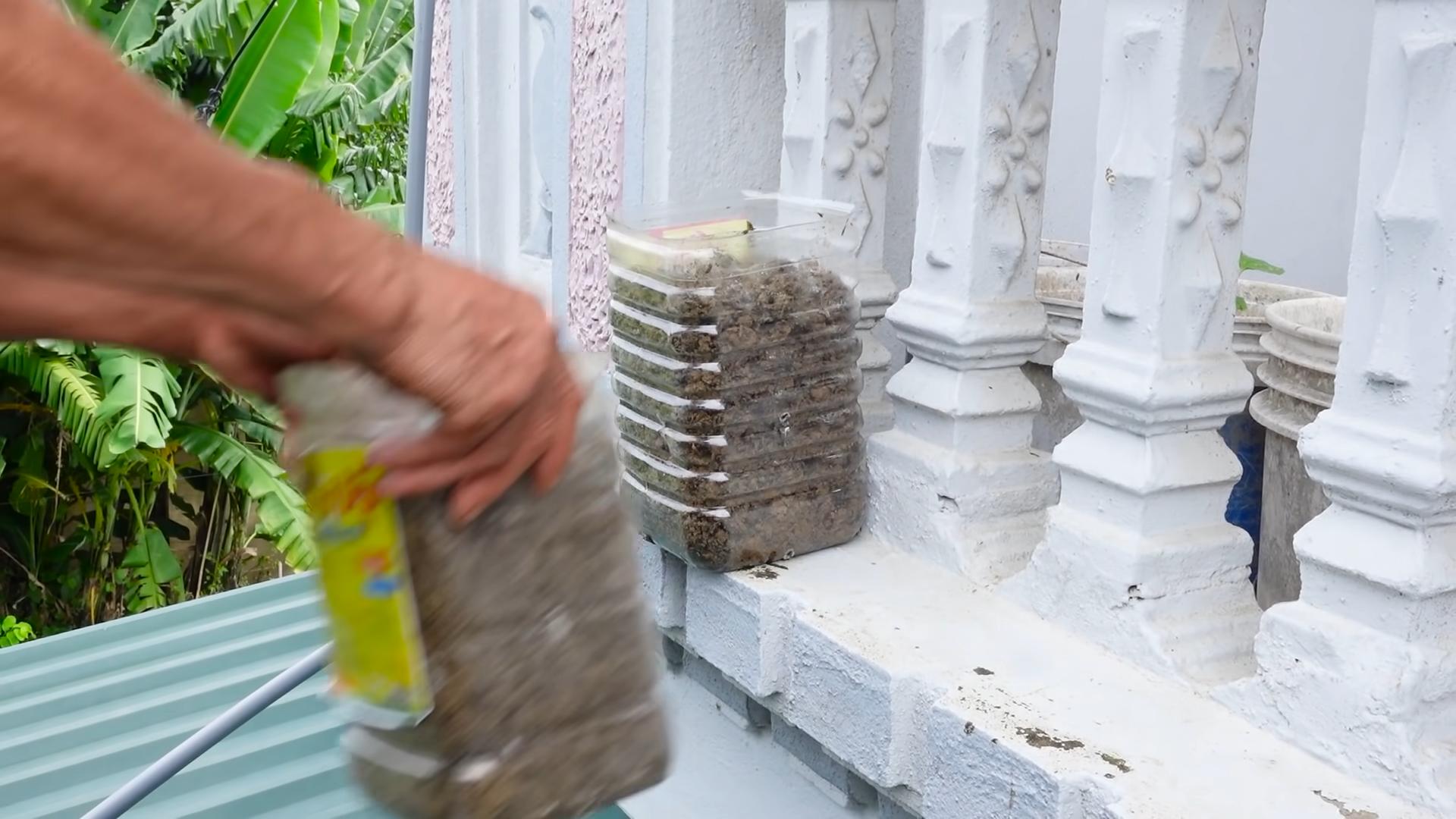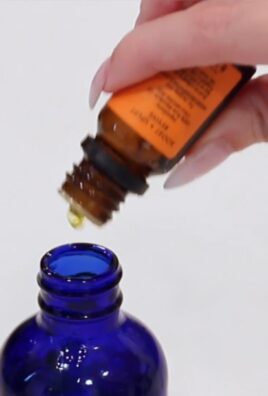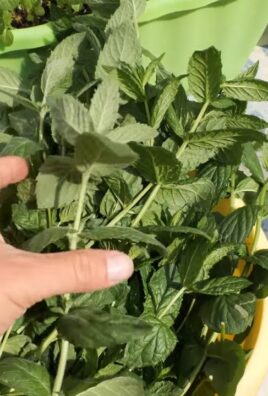Indoor vegetable gardening: ever dreamt of plucking a ripe tomato straight from the vine in the middle of winter? Or snipping fresh herbs for your dinner without even stepping outside? I know I have! For centuries, humans have cultivated gardens, initially out of necessity, but quickly evolving into a source of immense joy and connection with nature. While traditional gardening is wonderful, it’s not always accessible to everyone. That’s where the magic of bringing the garden indoors comes in.
This DIY guide is your passport to a thriving indoor vegetable oasis, regardless of your space or experience level. Forget the sprawling acres – we’re talking compact, creative solutions that fit right into your apartment, condo, or even just a sunny windowsill. I’m going to share some simple yet effective tricks and hacks that will transform your living space into a miniature farm-to-table paradise.
Why is indoor vegetable gardening so appealing? Well, beyond the sheer delight of growing your own food, it offers a fantastic way to reduce your carbon footprint, eat healthier, and even boost your mental well-being. Plus, let’s be honest, there’s something incredibly satisfying about nurturing a tiny seed into a bountiful harvest. So, grab your gardening gloves (or don’t, it’s indoor gardening after all!), and let’s dive into the wonderful world of growing your own delicious veggies, right inside your home!

Creating Your Own Thriving Indoor Vegetable Garden
Hey there, fellow plant enthusiasts! Ever dreamt of plucking fresh tomatoes right from your kitchen in the dead of winter? Or snipping fragrant basil for your pasta without stepping foot outside? Well, dream no more! I’m going to walk you through creating your very own indoor vegetable garden, a project that’s surprisingly rewarding and not as daunting as it might seem. Get ready to have fresh, homegrown goodness all year round!
Choosing Your Vegetables: The Right Plants for the Right Space
Before we dive into the nitty-gritty, let’s talk about what you can actually grow indoors. Not all vegetables are created equal when it comes to indoor gardening. Some need tons of sunlight, while others are more adaptable to lower light conditions. Here’s a breakdown to get you started:
* Leafy Greens: These are your superstars! Lettuce, spinach, kale, arugula, and Swiss chard are relatively easy to grow indoors and don’t require intense sunlight. They also mature quickly, giving you a faster harvest.
* Herbs: Another excellent choice! Basil, mint, parsley, chives, oregano, and thyme thrive indoors with sufficient light. Plus, they add amazing flavor to your cooking.
* Tomatoes: Yes, you can grow tomatoes indoors! Opt for dwarf or bush varieties specifically bred for containers, like ‘Tiny Tim,’ ‘Roma,’ or ‘Patio.’ They’ll need plenty of light and support.
* Peppers: Similar to tomatoes, choose compact pepper varieties like ‘Sweet Palermo’ or ‘Jalapeño M.’ They also need lots of light.
* Radishes: These are quick growers and don’t need a ton of space, making them perfect for indoor containers.
* Carrots: Select shorter, round carrot varieties like ‘Thumbelina’ or ‘Paris Market’ for container growing.
* Green Onions: Super easy to grow from scraps! Just place the root end of a green onion in a glass of water, and it will regrow. You can also plant them in soil.
Setting Up Your Indoor Garden: Light, Soil, and Containers
Now that you’ve chosen your veggies, let’s get your growing space ready. This is where the magic happens!
* Light: This is the most crucial factor for indoor vegetable gardening. Most vegetables need at least 6-8 hours of sunlight per day. If you don’t have a sunny south-facing window, you’ll need to invest in grow lights.
* Types of Grow Lights: LED grow lights are energy-efficient and produce very little heat. Fluorescent grow lights (T5 or T8) are another good option, but they need to be placed closer to the plants. Incandescent bulbs are not suitable for growing vegetables.
* Placement: Position your grow lights 6-12 inches above your plants, adjusting the height as they grow.
* Timers: Use a timer to ensure your plants get the right amount of light each day.
* Soil: Don’t use garden soil for your indoor containers! It’s too heavy and doesn’t drain well. Instead, use a high-quality potting mix specifically formulated for containers.
* Potting Mix Ingredients: Look for a mix that contains peat moss, perlite, vermiculite, and compost. These ingredients provide good drainage, aeration, and nutrients.
* Containers: Choose containers that are appropriate for the size of the vegetables you’re growing.
* Drainage: Make sure your containers have drainage holes to prevent waterlogging.
* Size: Leafy greens and herbs can be grown in smaller containers (6-8 inches deep), while tomatoes and peppers need larger containers (12-18 inches deep).
* Material: Plastic, terracotta, and ceramic pots are all suitable options.
Planting Your Vegetables: From Seed to Seedling
Alright, let’s get our hands dirty! You can start your vegetables from seeds or purchase seedlings from a local nursery.
* Starting from Seeds:
1. Choose Your Seeds: Select high-quality seeds from a reputable source.
2. Seed Starting Mix: Use a seed starting mix, which is finer and lighter than potting mix.
3. Planting: Follow the instructions on the seed packet for planting depth and spacing.
4. Watering: Keep the seed starting mix consistently moist but not soggy.
5. Warmth: Provide warmth by placing the seed trays on a heat mat or in a warm location.
6. Light: Once the seedlings emerge, provide them with plenty of light.
7. Thinning: Thin out the seedlings to give them enough space to grow.
* Transplanting Seedlings:
1. Harden Off: Gradually acclimate the seedlings to outdoor conditions before transplanting them into their final containers. This involves exposing them to increasing amounts of sunlight and wind over a period of a week or two.
2. Prepare the Container: Fill the container with potting mix, leaving some space at the top.
3. Remove the Seedling: Gently remove the seedling from its tray, being careful not to damage the roots.
4. Planting: Plant the seedling in the container at the same depth it was growing in the tray.
5. Watering: Water the seedling thoroughly after planting.
Caring for Your Indoor Garden: Watering, Fertilizing, and Pruning
Now that your vegetables are planted, it’s time to provide them with the care they need to thrive.
* Watering:
* Frequency: Water your vegetables when the top inch of soil feels dry to the touch.
* Method: Water thoroughly, allowing the excess water to drain out of the drainage holes.
* Overwatering: Avoid overwatering, as this can lead to root rot.
* Underwatering: Also avoid underwatering, as this can stress the plants.
* Fertilizing:
* Nutrients: Vegetables need nutrients to grow and produce fruit.
* Fertilizer Type: Use a balanced liquid fertilizer specifically formulated for vegetables.
* Frequency: Fertilize your vegetables every 2-4 weeks, following the instructions on the fertilizer label.
* Pruning:
* Purpose: Pruning helps to improve air circulation, promote bushier growth, and remove dead or diseased leaves.
* Leafy Greens: Harvest outer leaves as needed, allowing the inner leaves to continue growing.
* Tomatoes and Peppers: Prune suckers (the shoots that grow between the main stem and the branches) to encourage fruit production.
* Herbs: Pinch back the tips of the stems to encourage bushier growth.
* Pollination (For Tomatoes and Peppers):
* Indoor Pollination: Since you don’t have bees or wind to pollinate your tomatoes and peppers indoors, you’ll need to do it yourself.
* Methods: You can gently shake the plants or use a small paintbrush to transfer pollen from one flower to another.
Troubleshooting Common Problems: Pests and Diseases
Even with the best care, you might encounter some problems with your indoor vegetable garden. Here are some common issues and how to deal with them:
* Pests:
* Aphids: Small, soft-bodied insects that suck sap from plants.
* Treatment: Wash them off with a strong stream of water, use insecticidal soap, or introduce beneficial insects like ladybugs.
* Spider Mites: Tiny pests that create webs on plants.
* Treatment: Increase humidity, wash the plants with water, or use insecticidal soap.
* Whiteflies: Small, white, flying insects that suck sap from plants.
* Treatment: Use yellow sticky traps, wash the plants with water, or use insecticidal soap.
* Diseases:
* Powdery Mildew: A fungal disease that causes a white, powdery coating on leaves.
* Treatment: Improve air circulation, remove affected leaves, or use a fungicide.
* Root Rot: A fungal disease that causes roots to rot.
* Treatment: Avoid overwatering, improve drainage, or use a fungicide.
Harvesting Your Vegetables: Enjoying the Fruits (and Veggies!) of Your Labor
The best part of indoor vegetable gardening is, of course, harvesting your own fresh produce!
* Leafy Greens: Harvest outer leaves as needed, allowing the inner leaves to continue growing.
* Herbs: Harvest leaves as needed, pinching back the stems to encourage bushier growth.
* Tomatoes and Peppers

Conclusion
So, there you have it! Transforming your living space into a thriving, miniature farm is not only possible but surprisingly straightforward. This DIY approach to indoor vegetable gardening opens up a world of fresh, flavorful produce right at your fingertips, regardless of the season or the size of your outdoor space. Forget those bland, store-bought vegetables that have traveled miles to reach your plate. Imagine the satisfaction of harvesting your own juicy tomatoes, crisp lettuce, or fragrant herbs, knowing exactly where they came from and how they were grown.
This isn’t just about saving money (though that’s certainly a perk!). It’s about connecting with nature, learning new skills, and enjoying the unparalleled taste of homegrown goodness. It’s about adding a touch of green to your home, purifying the air, and creating a calming, therapeutic environment.
But the best part? This DIY method is incredibly adaptable. Feeling adventurous? Try experimenting with different varieties of vegetables. Dwarf bell peppers, bush beans, and compact eggplants are all excellent choices for indoor cultivation. You can also explore different growing mediums, from traditional potting soil to hydroponic systems. Consider adding companion plants like basil or marigolds to deter pests and enhance the flavor of your vegetables.
Don’t be afraid to get creative with your containers, too. Upcycle old jars, buckets, or even plastic bottles to create unique and eco-friendly planters. Just make sure they have adequate drainage! And remember, consistent watering and proper lighting are key to success.
This DIY indoor vegetable gardening method is more than just a trend; it’s a sustainable and rewarding way to enhance your life. It’s a chance to reconnect with the earth, nourish your body, and add a touch of beauty to your home.
We wholeheartedly encourage you to give this DIY project a try. Start small, be patient, and don’t be discouraged by initial setbacks. Every gardener, even the most experienced, has faced challenges along the way. The important thing is to learn from your mistakes and keep experimenting.
And most importantly, we want to hear about your experiences! Share your photos, tips, and stories in the comments below. Let’s create a community of indoor gardeners, supporting each other and celebrating the joys of homegrown produce. What vegetables are you most excited to grow indoors? What challenges have you faced, and how did you overcome them? Your insights could inspire others to embark on their own indoor gardening journey. So, grab your seeds, get your hands dirty, and let’s grow something amazing together!
Frequently Asked Questions (FAQ)
What are the best vegetables to grow indoors for beginners?
Starting with easy-to-grow vegetables is crucial for building confidence and ensuring early success. Some of the best options for beginners include:
* **Leafy Greens:** Lettuce, spinach, kale, and arugula are relatively low-maintenance and can be harvested continuously as needed. They thrive in cooler temperatures and require less intense light than fruiting vegetables.
* **Herbs:** Basil, mint, chives, parsley, and oregano are all excellent choices for indoor gardening. They are relatively pest-resistant and can be easily grown in small containers. Plus, they add a burst of flavor to your meals!
* **Radishes:** These fast-growing root vegetables are ready to harvest in just a few weeks. They are a great option for impatient gardeners who want to see results quickly.
* **Scallions (Green Onions):** Simply place the root end of a store-bought scallion in a glass of water, and it will regrow. You can also plant it in soil for a more sustainable harvest.
* **Cherry Tomatoes:** While they require more light than leafy greens, cherry tomatoes are relatively easy to grow indoors with the help of grow lights. Choose a compact variety that is specifically bred for container gardening.
How much light do indoor vegetables need?
Light is essential for photosynthesis, the process by which plants convert light energy into chemical energy. Most vegetables require at least 6-8 hours of direct sunlight per day. However, if you don’t have a sunny window, you can supplement with artificial grow lights.
* **Natural Light:** South-facing windows provide the most sunlight. East- and west-facing windows can also work, but you may need to supplement with grow lights during the winter months.
* **Grow Lights:** LED grow lights are the most energy-efficient option. Look for lights that emit a full spectrum of light, including both blue and red wavelengths. Place the lights a few inches above the plants and adjust the height as they grow.
* **Signs of Insufficient Light:** Leggy growth (long, spindly stems), pale leaves, and a lack of flowering or fruiting are all signs that your plants are not getting enough light.
What type of soil should I use for indoor vegetable gardening?
Using the right soil is crucial for providing your plants with the nutrients and drainage they need to thrive. Avoid using garden soil, as it can be too heavy and may contain pests or diseases.
* **Potting Mix:** A high-quality potting mix is the best option for indoor vegetable gardening. Look for a mix that is specifically formulated for containers and contains ingredients like peat moss, perlite, and vermiculite.
* **Soilless Mix:** Soilless mixes, such as coco coir or rockwool, are also a good option. They provide excellent drainage and aeration, but they don’t contain any nutrients, so you’ll need to supplement with fertilizer.
* **DIY Mix:** You can also create your own potting mix by combining equal parts peat moss, perlite, and vermiculite.
How often should I water my indoor vegetables?
Watering frequency depends on several factors, including the type of vegetable, the size of the container, the temperature, and the humidity.
* **Check the Soil:** The best way to determine if your plants need water is to check the soil moisture. Stick your finger about an inch into the soil. If it feels dry, it’s time to water.
* **Water Thoroughly:** When you water, water thoroughly until water drains out of the bottom of the container. This ensures that the entire root system is moistened.
* **Avoid Overwatering:** Overwatering can lead to root rot, which is a common problem in indoor vegetable gardening. Make sure your containers have adequate drainage and avoid letting your plants sit in standing water.
* **Consider Self-Watering Containers:** Self-watering containers can help to regulate moisture levels and reduce the risk of overwatering or underwatering.
How do I deal with pests and diseases in my indoor vegetable garden?
While indoor gardens are generally less susceptible to pests and diseases than outdoor gardens, problems can still arise.
* **Prevention is Key:** The best way to deal with pests and diseases is to prevent them from occurring in the first place. Start with healthy plants, use clean potting mix, and provide adequate ventilation.
* **Inspect Regularly:** Regularly inspect your plants for signs of pests or diseases. Look for insects, spots, or discoloration on the leaves.
* **Organic Solutions:** If you do find pests or diseases, try using organic solutions first. Insecticidal soap, neem oil, and horticultural oil are all effective against a variety of pests. For fungal diseases, try using a copper-based fungicide.
* **Isolate Affected Plants:** If you have a plant that is severely infested or diseased, isolate it from your other plants to prevent the problem from spreading.
Can I grow vegetables indoors year-round?
Yes, with the right conditions, you can grow vegetables indoors year-round. The key is to provide adequate light, temperature, and humidity.
* **Light:** Supplement with grow lights during the winter months when natural light is limited.
* **Temperature:** Most vegetables prefer temperatures between 60-75°F (15-24°C).
* **Humidity:** Maintain a humidity level of around 40-60%. You can increase humidity by using a humidifier or placing your plants on a tray filled with pebbles and water.
What about fertilizing my indoor vegetable garden?
Indoor vegetables, like all plants, need nutrients to grow and thrive. Since they are growing in a limited amount of soil, it’s important to fertilize them regularly.
* **Choose the Right Fertilizer:** Use a fertilizer that is specifically formulated for vegetables. Look for a balanced fertilizer with an NPK ratio (nitrogen, phosphorus, potassium) of around 10-10-10 or 20-20-20.
* **Follow the Instructions:** Follow the instructions on the fertilizer label carefully. Over-fertilizing can damage your plants.
* **Fertilize Regularly:** Fertilize your plants every 2-4 weeks, depending on the type of vegetable and the fertilizer you are using.
* **Organic Options:** There are also many organic fertilizers available, such as compost tea, worm castings, and fish emulsion.
By following these tips, you can create a thriving indoor vegetable garden and enjoy fresh, homegrown produce all year round. Remember to experiment, learn from your mistakes, and most importantly, have fun!





Leave a Comment